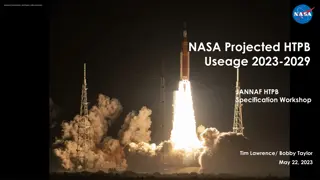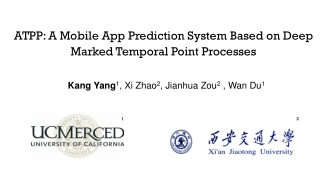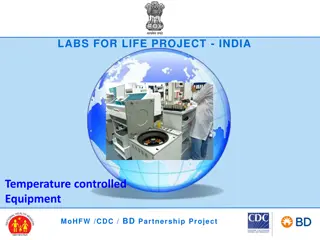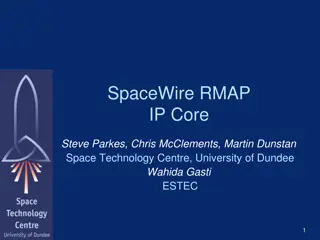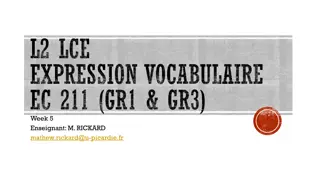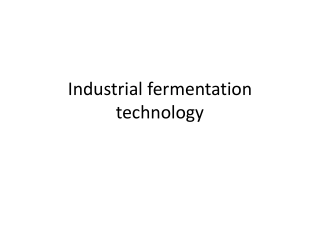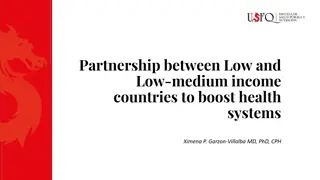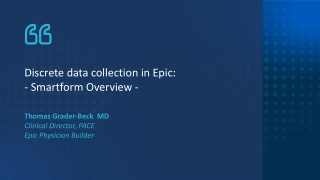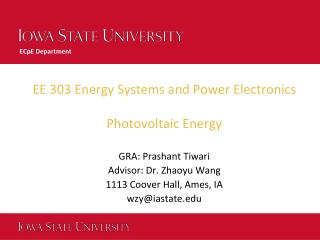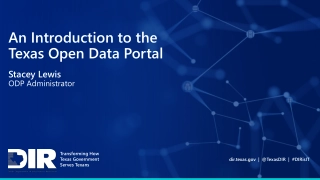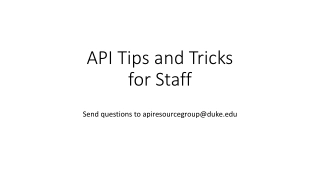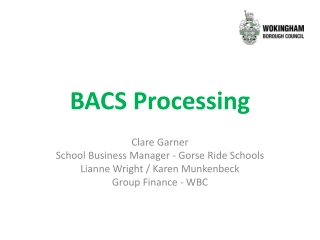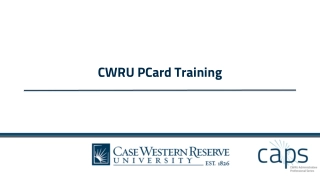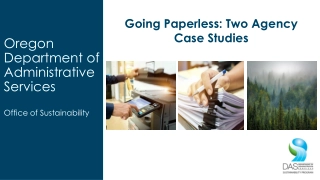ARIETIS. An example of NG-Medium usage
Independent SME near Toulouse specializing in electronic equipment and software for high-tech fields, with a strong focus on space activities. Projects range from telecommunication satellites to Earth observation programs, showcasing expertise in power conversion and onboard computer systems. The company's rich heritage and diverse range of scientific programs and memberships highlight their commitment to cutting-edge technology and innovation in the space industry.
Download Presentation
Please find below an Image/Link to download the presentation.
The content on the website is provided AS IS for your information and personal use only. It may not be sold, licensed, or shared on other websites without obtaining consent from the author. Download presentation by click this link. If you encounter any issues during the download, it is possible that the publisher has removed the file from their server.
- Space Technology
- Innovative Development
- Electronic Equipment
- Telecommunication Satellites
- Earth Observation
Presentation Transcript
ARIETIS An example of NG-Medium usage Jokin PERRET 16/03/2023 1
AGENDA 1. EREMS & INNALABS 2. ARIETIS Project 3. Designing with NG-Medium 4. Conclusion 2
1-EREMS & INNALABS 2-ARIETIS Project 3-Designing with NG-Medium 4-Conclusion 1. EREMS & INNALABS
1-EREMS & INNALABS 2-ARIETIS Project 3-Designing with NG-Medium 4-Conclusion 1. EREMS & INNALABS ----- EREMS -------------------------------------------------------------------------------------------------- Independent SME, based near Toulouse, created in 1979 Aim: Development of electronic equipment, and associated software for high technological fields, especially for space Space activities: A very strong heritage (space activities since 82) Development of flight and ground equipment Design, Manufacturing, Test, and Qualification of electronic equipment Major Field of expertise: Power conversion Front End and acquisition On Board Computer, Data Handling Unit Motor Drive Electronics Staff 170 employees (110 engineers) Revenue 2021/22 : 17,4 M Projects from class 1 to NewSpace: Certifications: ISO 9001 : 2015 EN 9100 : 2018 TELECOMMUNICATION SATELLITES EARTH OBSERVATION Memberships: HUMAN SPACE FLIGHT SCIENTIFIC PROGRAMS R&T 4
1-EREMS & INNALABS 2-ARIETIS Project 3-Designing with NG-Medium 4-Conclusion 1. EREMS & INNALABS ----- EREMS -------------------------------------------------------------------------------------------------- EARTH OBSERVATION PROGRAMS Projects from class 1 to NewSpace... CERES RTU modules TELECOMMUNICATION SATELLITES CERES / FLEX SAP (Passivation Units) Electronic units onboard: SWOT RTU modules and assembly IRIDIUM-Next (Battery electr. modules) IASI-NG/METOP-SG 3 main units of the instrument E3000 / EOR PLEIADES-NEO Complete set of Electronic equipment of the optical instrument and soon other types of units flying on SpacebusNeo COPERNICUS LSTM FEE EurostarNeo CO3D Processing & Mass Memory Optical instrument electronics Mechanism Drive electronics SCIENTIFIC PROGRAMS (satellites/probes) SVOM ECLAIR/UGTS (ECLAIR OnBoardComputer) NEWSPACE HUMAN SPACE FLIGHT PLATO ARIETIS (Gyro Electronics) ANGELS - PCDU KINEIS Constellation - PCDU MMX Rover - PCDU DARWIN CU BOMO EXOMARS MicrOmega (RF Synthetiser) CARDIOSPACE 2 on Tiangong 3 SVOM MXT/MDPU (MXT OnBoardComputer) CARMEN Radiation monitors SOLAR-ORBITER High Voltage Power Supply CO3D - 3 main units MSR ERO RIU MTB-2 on BION-M n 2 R&T projects linked to Data Handling electronics and processing, Power Distribution TELEMAQUE (Alpha Mission) LUMINA (Alpha Mission) 5
1-EREMS & INNALABS 2-ARIETIS Project 3-Designing with NG-Medium 4-Conclusion 1. EREMS & INNALABS ----- INNALABS ------------------------------------------------------------------------------------------------ Key markets: Aerospace & Defence Space High End Industrial Emerging Technologies Independent SME, formed in Ireland Oct 2011 Head quarter in Dublin Ireland since Aug 2012 Business type : Develop Inertial sensors & systems Space Heritage: TRL9 for gyro and accelerometers (space proven). New products being developed both in class 1 quality and new space quality. Staff: 55 employees Patent Registered: 32 Patents Revenue 2022 : 10-15 M Mission statement: Education Hi levels - technology To become a leading global brand which is acknowledged as a To become a leading global brand which is acknowledged as a premier designer & manufacturer of inertial components & systems premier designer & manufacturer of inertial components & systems which provide innovative solutions which add value to our customers which provide innovative solutions which add value to our customers Certification ISO 9001 2015 6
1-EREMS & INNALABS 2-ARIETIS Project 3-Designing with NG-Medium 4-Conclusion 2. ARIETIS PROJECT
1-EREMS & INNALABS 2-ARIETIS Project 3-Designing with NG-Medium 4-Conclusion 2 ARIETIS PROJECT ----- Aim ------------------------------------------------------------------------- Development of a stand alone 3-axes Gyroscope Unit space class 1 applications (ESA ECSS standard, class1 EEE parts) 10/15 year lifetime for LEO/GEO High reliability ITAR-free Off-the-shelf product ----- Main features ------------------------------------------------------------ Very low noise maximum range: 4,5 deg/s precision: 0,01deg/h Low power : 8,5W ----- Important dates -------------------------- Satellite Interfaces: RS422 (default) / RS485 / CAN Analog & Digital outputs Engineering models available since Q2 2022 Qualification in 2023 Flight Models available from Q1 2024 ----- Key applications --------------------------------------------------------- Earth observation,Science and Exploration Already selected for LEO and science missions: PLATO and LSTM 8
1-EREMS & INNALABS 2-ARIETIS Project 3-Designing with NG-Medium 4-Conclusion 2 ARIETIS PROJECT ----- EREMS & INNALABS complementary association ---------------------------------------------- EREMS main activity is space application electronic s development with a lot of class 1 projects 1sttime for INNALABS to propose a gyroscope for space application EREMS has years of FPGA application expertise 1stdesign for INNALABS involving digital regulation of the sensors INNALABS main activity is gyroscope development 1stGyroscope electronic for EREMS INNALABS provides EREMS provides Overall mechanical and electronic design Gyroscope expertise Regulation loop detailed definition Sensor manufacturing EGSE manufacturing mechanical integration performance validation environmental test Space class 1 electronic expertise Digital design expertise Power supply board design and development FPGA design and development EEE procurement PCB design board manufacturing board unitary testing 9
1-EREMS & INNALABS 2-ARIETIS Project 3-Designing with NG-Medium 4-Conclusion 2 ARIETIS PROJECT ----- Internal architecture ---------------------------------------------------------------------------------- Power Supply board (PSB) InterFace Board (IFB) Digital Board (CLDB with NG-medium FPGA) 3 Proximity boards 10
1-EREMS & INNALABS 2-ARIETIS Project 3-Designing with NG-Medium 4-Conclusion 2 ARIETIS PROJECT ----- Internal architecture ---------------------------------------------------------------------------------- 11
1-EREMS & INNALABS 2-ARIETIS Project 3-Designing with NG-Medium 4-Conclusion 2 ARIETIS PROJECT ----- FPGA development ------------------------------------------------------------------------------------ 2 major problematics in 2018 Complex design very precise control loops 1sttime digital regulation for INNALABS 1sttime Gyro for EREMS Theoretical modeling: Simulink Main Goal: specification and theoretical validation quantification studies for FPGA implementation Anticipate NG-medium difficulties for the algorithm implementation 1 axis breadboards: Igloo2 Main Goal: Onboard validation of the algorithm and preparation for 3 axes model Gyro algorithm developed with NG-medium target in mind Bit accurate vhdl vs Simulink algorithm verification fast development for other modules New target NG-Medium selected Technology qualification ongoing Poor maturity of NanoXplore s development tools EREMS has no much experience with the technology 3 axes EM1 & EM2: Igloo2 Main goal: Algorithm update and Onboard validation of the 3 axes design algorithm resource optimization design functionally identical to FM Solution: segregationand anticipation 1. Validate algorithm beforeNG-medium porting activities Avoid mixing issues Give time for NanoXplore tool progression 2. Plan early timing closure activities on complete design before FPGA PDR (Preliminary Design Review) 3 axes EM3: NG-medium main goal: Onboard validation with final FPGA target large effort on timing closure numerous small design rework design identical to FM 12
1-EREMS & INNALABS 2-ARIETIS Project 3-Designing with NG-Medium 4-Conclusion 3. DESIGNING WITH NG-MEDIUM
1-EREMS & INNALABS 2-ARIETIS Project 3-Designing with NG-Medium 4-Conclusion 3 Designing with NG-Medium ----- ARIETIS FPGA as of today ---------------------------------------------------------------------------- FPGA_3AXES MAIN_CLR_SYNCU11 i_N_MAIN_CLR to all modules Key characteristics: Complex & fast regulation loops 8MHz / 1MHz / 500kHz Large amount of DSP usage 1 clock domain: 80MHz 86 configurable parameters Voltages & Temperatures U2 U7 ADC_HK U1 MAIN_CTRL Satellite IF nom / red GYRO_MANAGER GYRO_MANAGER U6-U9-U10 SAT_IF_MANAGER Adet / Ndet Aexc 3x User Output GYRO_MANAGER Gyroscope sensor IF Rexc Satellite Analog IF U8 ANALOG_OUTPUT 134 vhdl files About 60 % of NG-medium Qexc Legend : U3 ctrl signals U4-U5 MEMORY_MANAGER configuration data HK & Status data calibration input data Test interfaces TEST_IF Non-volatile memory Detailed NG-Medium occupancy: +------------------+------------------+-------------+-----------------+------------+--------+--------+------------+--------------+-------------+-----------+----------+ | | | | 1 - bit | Register | Cross | Clock | Clock | Digital | 4-LUT | DFF | XLUT | Carry | file | domain | Buffer | switch | signal | | | | | block | clock | | | processor +------------------+------------------+-------------+-----------------+------------+--------+--------+------------+--------------+-------------+-----------+----------+ | 8694/32256 (27%) | 9720/32256 (31%) | 0/2016 (0%) | 5823/8064 (73%) | 0/168 (0%) | 0/0 | 0 | 0/336 (0%) | 90/112 (81%) | 24/56 (43%) | 1/32 (4%) | 0/4 (0%) | +------------------+------------------+-------------+-----------------+------------+--------+--------+------------+--------------+-------------+-----------+----------+ | Memory | | | | block | WFG | PLL | | | | | Estimated FE occupancy is 19262/32256 (60%) 14
1-EREMS & INNALABS 2-ARIETIS Project 3-Designing with NG-Medium 4-Conclusion 3 Designing with NG-Medium ----- Timing closure activities ------------------------------------------------------------------------------ Started in 2022 with complete FPGA Design working on Igloo2 3 AXES management validated with EM1/EM2 Over 100MHz frequency reached without any timing or placement constraint Some modules are already tagged for large rework First run with NXmap3.11: Huge effort needed for 80MHz target 20,541 MHz Iterative Methodology applied : Nxmap run with random seeds NanoXplore s Timing analyzer Case by case approach depending on critical paths: Multicycle constraint definition Test NXmap option/directive Consider small design rework Placement constraint definition Define False paths until large module rework Back to step 1 NXmap with random seed timing analyzer case by case approach depending on critical paths 15
1-EREMS & INNALABS 2-ARIETIS Project 3-Designing with NG-Medium 4-Conclusion 3 Designing with NG-Medium ----- NXpython scripting ------------------------------------------------------------------------------------ ARIETIS project counts more than 560 NXmap recorded runs during timing closure progression Scripting is mandatory for efficient timing closure progression We recommend using several scripts. We chose the following principle: 1 Main script with most of options and synthesis/placement/routing commands 1 sub-script for source list 1 sub-script for IO definitions 1 sub-script for multicycle definitions 1 sub-script for placement constraints 16
1-EREMS & INNALABS 2-ARIETIS Project 3-Designing with NG-Medium 4-Conclusion 3 Designing with NG-Medium ----- Timing closure overall progression ---------------------------------------------------------------- Multicycles small reworks Multi-seed placements 17
1-EREMS & INNALABS 2-ARIETIS Project 3-Designing with NG-Medium 4-Conclusion 3 Designing with NG-Medium ----- Multicycles ---------------------------------------------------------------------------------------------- Very effective progression at the start of timing closure D D D Q Q Q D D D Q Requires anticipation because multicycle structures have to be implemented in the vhdl design Logic cloud Logic cloud Logic cloud Ena Ena Ena Ena Q Q Clk C lk C lk C lk C lk C lk SEQ_PULSE1 C L R C L R C L R C L R C L R C L R When well-anticipated, multicycle definition is straight-forward and easy to verify SEQ_PULSE SEQ_PULSE SEQ_PULSE_rrr SEQ_PULSE2 D D Q Q D D Q Q D Q It sometimes requires complex design analysis to be certain that there is no possible path breaking the multicycle C lk C lk C lk C lk C lk C L R C L R C L R C L R C L R SEQ_PULSE3 ARIETIS case: Total of 500 multicycle constraints defined Very good progression from 20MHz to 60MHz Only minor progression after that Large amount of multicycle raise 1 big question: How to verify that none of the constraint is wrong ? 18
1-EREMS & INNALABS 2-ARIETIS Project 3-Designing with NG-Medium 4-Conclusion 3 Designing with NG-Medium ----- Multi-seed ----------------------------------------------------------------------------------------------- Launch several run of NXmap with random seeds Not implemented as baseline command in NXmap or NXpython Requires specific scripting One of most useful things we added Counteracts the bad/good luck effect of random seed Essential to give more timing progress results Shows about 20MHz spreading between good and bad seeds Eases determining which part of the design requires priority attention Allows verifying that each new constraint/design change is actually a progression and not just good luck on seeds Unfortunately some options make the multi-seed scripting fail at the 2ndrun: Timing driven option Placement constraint Less efficient solution: Manually launch several NXmap runs in parallel 19
1-EREMS & INNALABS 2-ARIETIS Project 3-Designing with NG-Medium 4-Conclusion 3 Designing with NG-Medium ----- Timing driven ------------------------------------------------------------------------------------------- New functionality implemented in NXmap22.1 One of most expected addition to NXmap supposed to adapt element placing and routing to timing estimation/analysis 1sttry results: Nxmap run takes x5 to x10 longer time We Lost multi-seed ability Frequency dropped about -10MHz We supposed it was related to the non exhaustiveness of our multi-cycle definition list NXmap might spend too much effort on paths that could actually be multi-cycled We reactivated the timing driven later with a more complete multicycle list It was hard to measure efficiency of the feature during ARIETIS timing closure No multi-seed means no reliable way to compare results In the end, it s with timing driven activated that the targeted 80MHz and the +10% margin were reached for ARIETIS Best run 94MHz About 1/3 runs > 80MHz About 1/15 runs > 88MHz 20
1-EREMS & INNALABS 2-ARIETIS Project 3-Designing with NG-Medium 4-Conclusion 3 Designing with NG-Medium ----- Placement constraints -------------------------------------------------------------------------------- Without any placement constraint: The design grows in a symmetrical way around the center of the FPGA Nxmap Spreads resources even if they are linked to the same data-path It Requires a lot of iterations to find good placement solutions It s a mix between defining very constrained region for module to improve internal paths performances And accepting larger regions to give space for routing and also improve non-constrained paths performances Limitations from NXmap22.1 Loss of multi-seed ability Hard/Soft option for region definition is clumsy Region definition is limited to tiles No tool to determine each module resource usage No report to list resources actually affected to a region Sub-modules regions have to be declared before the module above 21
1-EREMS & INNALABS 2-ARIETIS Project 3-Designing with NG-Medium 4-Conclusion 3 Designing with NG-Medium With no placement constraint Symmetrical aspect grow effect around focus point at the center of FPGA Corners are underexploited Spreading effect observable on critical paths What does it look like after placement constraint ? 22
1-EREMS & INNALABS 2-ARIETIS Project 3-Designing with NG-Medium 4-Conclusion 3 Designing with NG-Medium After 42 regions defined What worked for ARIETIS ? Usage of Soft Regions Smallest possible regions for interface small modules with few interactions with other modules Give some margin to large modules (typically top level modules) Distinct non overlapping regions for the 3 axes No constraint on large module that requires a lot of interactions with others (Main controller) Constrain all RAM usage close to the modules accessing it Select sub-module to be constrained depending on which one came often in critical path results 23
1-EREMS & INNALABS 2-ARIETIS Project 3-Designing with NG-Medium 4-Conclusion 3 Designing with NG-Medium ----- Small and Large module reworks ------------------------------------------------------------------- Add multicycle structures to the design Enhance synthesis for multi-cycles enablesignals Give top priority to enable signal in each clocked process This forces NXmapto get less logic on enable signal paths Hunt avoidable logic between modules Multiplication operation work arounds: Use synthesis constraint to force DSP usage for multiplication operations with a constant Break large size multiplications in 2 such as they can each fit in 1 DSP 24
1-EREMS & INNALABS 2-ARIETIS Project 3-Designing with NG-Medium 4-Conclusion 3 Designing with NG-Medium ----- A few more details ------------------------------------------------------------------------------------- Hard or Soft regions ? In ARIETIS case, Hard option Fails at placement (2/5) for most of our modules Soft option works but has a major drawback: Unrequested resources from other modules are affected to the defined region Can totally block placement progression until you affect these resources to an other region Reset tree routing optimization: Instantiate global buffer in 1 vhdl sub-module Affect the module to a 1-tile region at the closest point to global buffers location (center of FPGA) Do not use registered option for IOs Change the focus point ? No effect observable NG-Largetest ? Bigger size => More spreading => Frequency drop around 20MHz 25
1-EREMS & INNALABS 2-ARIETIS Project 3-Designing with NG-Medium 4-Conclusion 4. CONCLUSION
1-EREMS & INNALABS 2-ARIETIS Project 3-Designing with NG-Medium 4-Conclusion 4 CONCLUSION ----- ARIETIS project feedback ----------------------------------------------------------------------------- Very challenging project Complex FPGA design with High frequency target New technologywith NG-medium Required a lot of co-engineering between EREMS and INNALABS Starts producing results Algorithm onboard validation with Igloo2 Timing closure successful on NG-medium First onboard tests of ARIETIS with NG-Medium are currently ongoing 27
1-EREMS & INNALABS 2-ARIETIS Project 3-Designing with NG-Medium 4-Conclusion 4 CONCLUSION ----- NXmap feedback --------------------------------------------------------------------------------------- NXmap tools have a lot of room for improvement to help FPGA designers progress faster on challenging projects. Simple projects should easily produce good results Projects with high frequency and high resource usage require a lot of effort The FPGA technology is promising 94 MHz on such a complex design is a real achievement We expect upcomming tool improvements to help reduce the effort needed for future projects Impulse was rapidly tested in 2023 but failed with our NXmap22.1 script for ARIETIS design Further investigation required with NanoXplore support, but should be resolved with small script adaptations Some additions are greatly appreciated : New IHM allows more human-friendly manipulations & investigation Get module resource usage without having to define regions Some key features to be improved: Add multi-seedability Have access to a post-synthesis schematic viewer Improve Hard / Soft regions behavior Improve effectiveness of Timing Driven 28
1-EREMS & INNALABS 2-ARIETIS Project 3-Designing with NG-Medium 4-Conclusion 4 CONCLUSION ----- Contacts -------------------------------------------------------------------------------------------------- FPGA related subjects Jokin PERRET: jokin.perret@erems.fr EREMS other projects Yohann BALLOT: yohann.ballot@erems.fr INNALABS and ARIETIS equipment Alberto TORASSO: alberto.torasso@innalabs.com Rachel MURRAY: rachel.murray@innalabs.com 29
1-EREMS & INNALABS 2-ARIETIS Project 3-Designing with NG-Medium 4-Conclusion MANY THANKS



